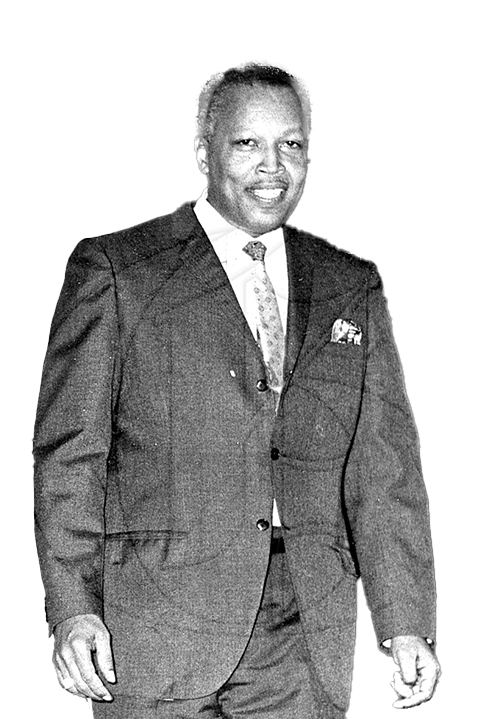

Hon. Hugh Shearer

Hon. Hugh Shearer
The Most Hon. Hugh Lawson Shearer, Jamaica’s third Prime Minister, was born in the village of Martha Brae just outside of Falmouth, Trelawny on May 18, 1923. His parents were James Shearer a World War One ex-serviceman and Esther Lindo, a dressmaker.
He attended the Falmouth Primary school and from there he won the parish scholarship to St. Simon’s College, a privately owned high school in Kingston. He graduated from St. Simon’s in 1940.
Mr. Shearer entered the workforce during a period of intense political and labour turmoil in Jamaica. Sir Alexander Bustamante, the undisputed head of the labour movement and founder of the Bustamante Industrial Trade Union (BITU), and Norman Manley, head of the first organised political party in Jamaica, the People’s National Party (PNP), were both engaged in the struggle to reshape and redefine the Jamaican society in the period from 1938 to 1944.
Trainee Journalist
Mr. Shearer, who could claim distant kinship to both Bustamante and Manley, was interested in journalism. He was taken on as a trainee journalist on the weekly publication the “Jamaica Worker”, the newspaper of the BITU, understudying Mr. Lynden G. Newland, who was then the paper’s editor. When Mr. Newland became General Secretary of the Union, Mr. Shearer continued working on the paper and eventually became its editor.
While still editor of the paper, Mr. Shearer began to serve his apprenticeship as a trade unionist. He took part with Bustamante and other union officers in union organisation and in negotiations with employers in some of the most important labour disputes. Mr. Shearer got his first taste of party politics during the 1944 elections, when he campaigned for the “Chief”, as Bustamante was then popularly called, in the Western Kingston constituency. The Jamaica Labour Party (JLP) won the election and Mr. Shearer continued his work in the BITU.
Three years later, in 1947, Mr. Shearer was appointed Assistant General Secretary of the Union, and in that same year contested and won the Central St. Andrew seat on the Kingston and St. Andrew Corporation Council.
In 1948 Mr. Shearer attended a Colonial Development and Welfare Trade Union Scholarship course in Barbados.
In the 1949 elections, Mr. Shearer contested the Western Kingston seat but was defeated by the PNP’s Ken Hill.
Key Trade Union Figure
In trade union circles, Mr. Shearer was becoming increasingly recognised as a key figure, sitting next to Bustamante in all important negotiations. In 1953 he was appointed Island Supervisor of the BITU.
In the 1955 general elections he was elected to a seat in the House of Representatives even though the JLP lost the elections. He sat in the Opposition benches until he lost his seat in the 1959 elections.
In 1960 he was elected Vice-President of the BITU, second only to Sir Alexander Bustamante who was President General.
In the 1961 referendum campaign to decide whether Jamaica should remain in the West Indies Federation or seek independence alone, the BITU under Hugh Shearer swung its weight behind the JLP’s campaign for Jamaica to go it alone, and the JLP gained a decisive victory.
Senate Appointment
The JLP won the succeeding general elections and Mr. Shearer was appointed to the Legislative Council. When this was replaced by the Senate he was made Leader of Government Business and a Minister without Portfolio. He was also appointed Deputy Chief of Mission for Jamaica at the United Nations General Assembly and figured in many crucial international issues.
In 1963, Mr. Shearer presented a proposal to the United Nations that 1968 be designation “Human Rights Year”. This proposal was accepted by the UN General Assembly.
Mr. Shearer was a member of the Jamaican delegation at the Commonwealth Prime Ministers’ Conference in September 1966.
In the 1967 general elections, Mr. Shearer won the Clarendon seat which had been held by Sir Alexander Bustamante before his retirement from active politics.
In the new Government, Mr. Shearer was appointed Minister of External Affairs on February 27, 1967.
